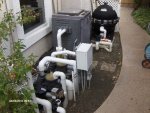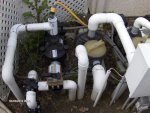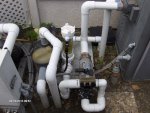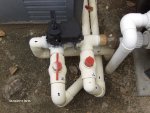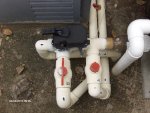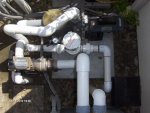I've been fighting with a new Rainbow 320 for more than a month
I have the one with clear cartridge and I use 3†tablets.
The valve is set to the MAX 5
There is the problem:
The tablets do not dissolve well and my chlorine level is low, very low.
Some information :
Water is 63 degrees and I run the pump for 3 ½ hours a days during winter
When pump is on, I can see the water going thought the clear canister.
When I turn the solar system ON, the water drain from the canister and do not enter from the top again.
Filter is clean; pressure is 14 psi when not using the solar and 19 psi when using the solar system.
This is what he checked so far :
When using the solar (pump is ON) no water runs to the canister ,I removed the tube going from the pipe to the canister ,water is running with good pressure ……I put the tube back on and water run in the canister again .
I can't think of any reason why the canister will not fill back up with water when the pumps turn on in the morning. Any ideas?
Thank you
I have the one with clear cartridge and I use 3†tablets.
The valve is set to the MAX 5
There is the problem:
The tablets do not dissolve well and my chlorine level is low, very low.
Some information :
Water is 63 degrees and I run the pump for 3 ½ hours a days during winter
When pump is on, I can see the water going thought the clear canister.
When I turn the solar system ON, the water drain from the canister and do not enter from the top again.
Filter is clean; pressure is 14 psi when not using the solar and 19 psi when using the solar system.
This is what he checked so far :
When using the solar (pump is ON) no water runs to the canister ,I removed the tube going from the pipe to the canister ,water is running with good pressure ……I put the tube back on and water run in the canister again .
I can't think of any reason why the canister will not fill back up with water when the pumps turn on in the morning. Any ideas?
Thank you


